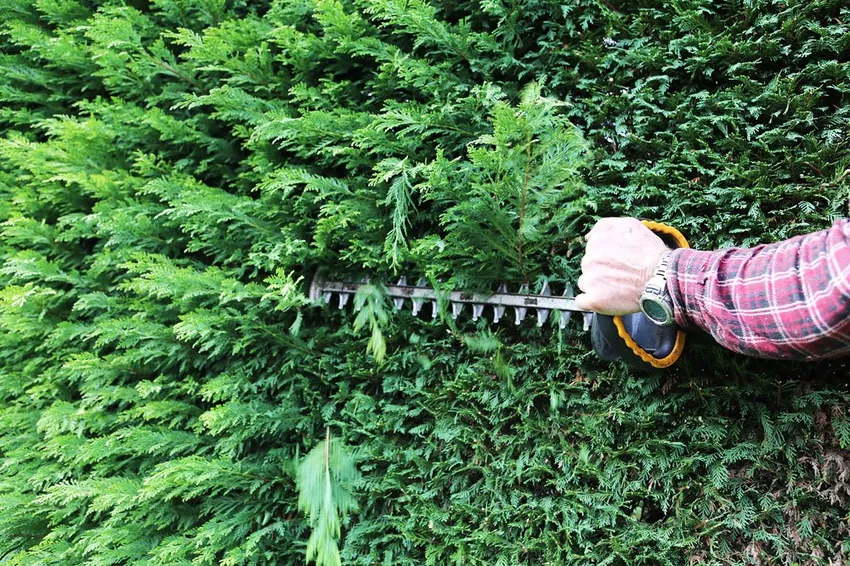Conifers grow super fast and are a real eye-catcher when planted as a hedge. But if you don't cut them regularly, you risk uncontrolled growth that is no longer so easy to tame.

A good relationship with the neighbor is important. However, you don't want to give up your privacy. To ensure this, it makes sense to plant a hedge. Evergreen hedges with thuja conifers or cherry laurel are particularly ideal. They are a natural boundary between two gardens and are often much nicer to look at than a wall or fence. It is only important that the hedge is planted with mutual consent.
Most people choose conifers because they grow super fast, are very durable and look really great when cared for. However, to ensure that this remains so in the long term, you cannot avoid cutting the hedge.
Pruning conifers - 6 important tips
1 Evergreen conifers such as conifers (Thuja etc.) are usually only pruned in spring or autumn. Best in spring between February and March, just before they sprout. In autumn, on the other hand, it tends to be on days with cloudy weather, because the autumn sun that is too strong could dry out the exposed parts of the branches.
2 Conifers only get their real charm from their bushy and dense growth habit. This should be in place before you start using hedge trimmers. If you work too radically when thinning and pruning, the conifer will quickly look unsightly.
3 You should also be very careful with very young plants. These are very susceptible to diseases and fungi and can then no longer sprout again at the interfaces.
4 When pruning, you should leave out the tip, otherwise the conifers will only grow very irregularly.
5 Only use sharp tools when pruning, otherwise the plant may be damaged.
6 If the pruning is too severe, the plant will suffer irreparable damage. Therefore you should only cut back slightly every year.
Pruning conifers with what?
For the cut itself, you can easily rely on the classics. For one, a manual oneHedge trimmers and on the other hand the electric hedge trimmers, of which the battery-powered variant is now probably the most popular. No matter which variant you choose, the only important thing is that the blade or knife is always sharp and well-kept. Improper cuts result in the cut "not healing properly" and fungi can enter the plant.Practical tip at the end
 Where you cut the hedge, it is best to place a large cloth or tarpaulin under the coniferous hedge. The cut material falls onto this base and can be removed or transported away more easily. On slippery surfaces, the clippings can still be swept up well, but very small and fine clippings can be difficult to remove on lawns or in flower beds.
Where you cut the hedge, it is best to place a large cloth or tarpaulin under the coniferous hedge. The cut material falls onto this base and can be removed or transported away more easily. On slippery surfaces, the clippings can still be swept up well, but very small and fine clippings can be difficult to remove on lawns or in flower beds.